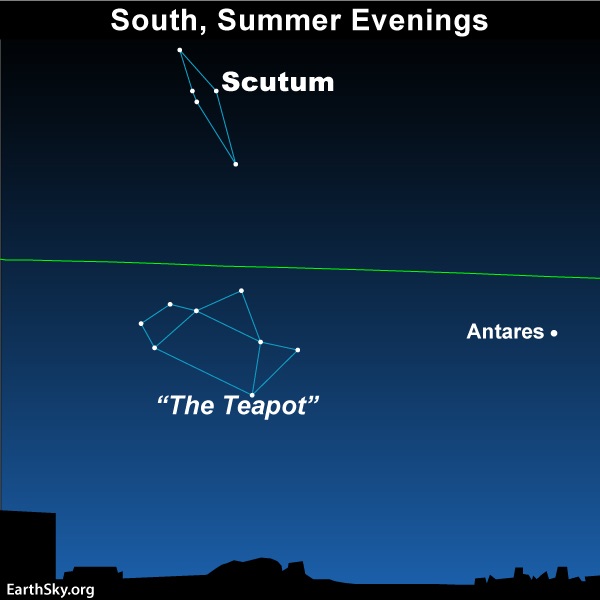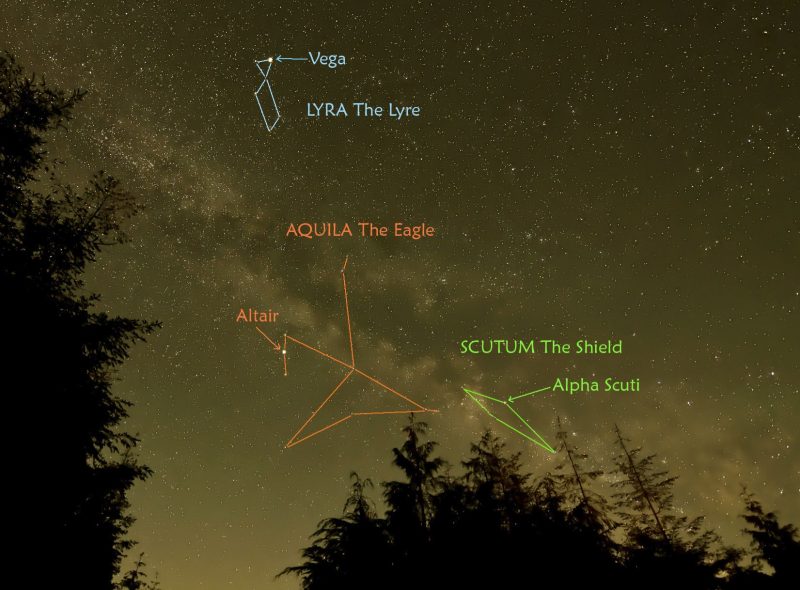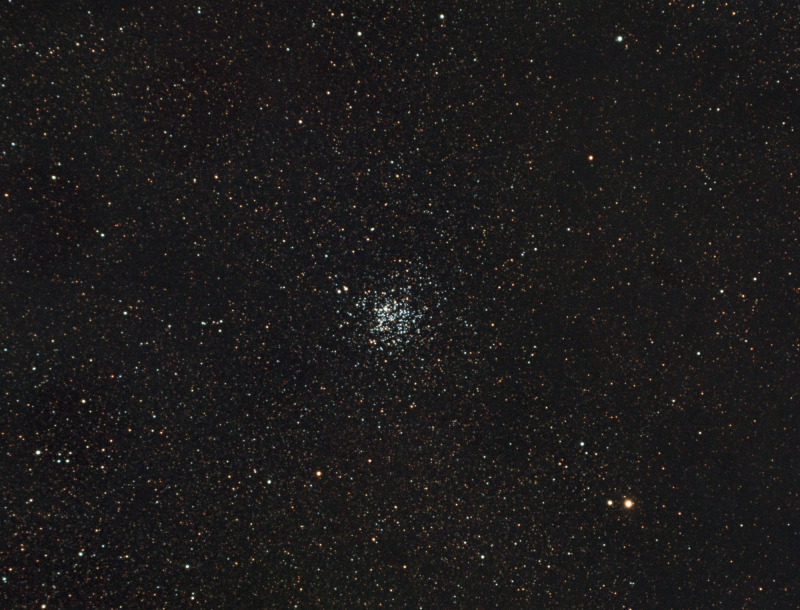
In late July and early August, watch for one of our sky’s most beautiful sights. Look in a dark sky, far from the glare of city lights, for a hazy pathway that stretches across the sky. It’ll be in the southern sky in the Northern Hemisphere, or overhead in the Southern Hemisphere. This band is the edgewise view into our own Milky Way galaxy. And if you see it, you can also find a small but noteworthy constellation called Scutum the Shield.
There are only five stars in Scutum’s outline, but the constellation is noticeable in a dark sky because the Milky Way around it is so rich. In fact, Scutum lies near the famous Teapot pattern in the constellation Sagittarius, which marks the direction of the Milky Way’s center.
Scutum doesn’t mark the exact center of our galaxy, but it’s pretty close!
Named after a Polish king
The constellation Scutum has a fascinating history. In 1683, the Polish astronomer Johannes Hevelius named it Scutum Sobiescianum, meaning the Shield of Sobieski. He named it for Jan III Sobieski, a Polish king who led his army to victory in the Battle of Vienna. In charts from the era, the constellation resembles the king’s coat of arms on his shield. And today, you still sometimes hear amateur astronomers refer to this part of the sky as Scutum Sobieski.
Scutum is one of two constellations named after real people. The other is Coma Berenices, named for an Egyptian queen.
The Shield isn’t big, and it requires a dark sky to be seen. But – to those who find it in dark skies – it provides some very nice views with the unaided eye or binoculars. The very noticeable Teapot of Sagittarius is below Scutum. And the bright star Vega shines high above.

Famous deep-sky objects near Scutum
Some famous deep-sky objects reside in this part of the sky, too. One is the Wild Duck Cluster, also known as M11. It’s an open star cluster – one of the densest ever found – and it contains some 3,000 stars.
Another open cluster in this part of the sky is M26, an open cluster discovered by Charles Messier in 1764.

Bottom line: Look for the constellation Scutum the Shield. It’s located in a rich region of the Milky Way and requires a dark sky to be seen.
It’s meteor season. Click here and check out EarthSky’s meteor shower guide.
EarthSky astronomy kits are perfect for beginners. Order yours today.











